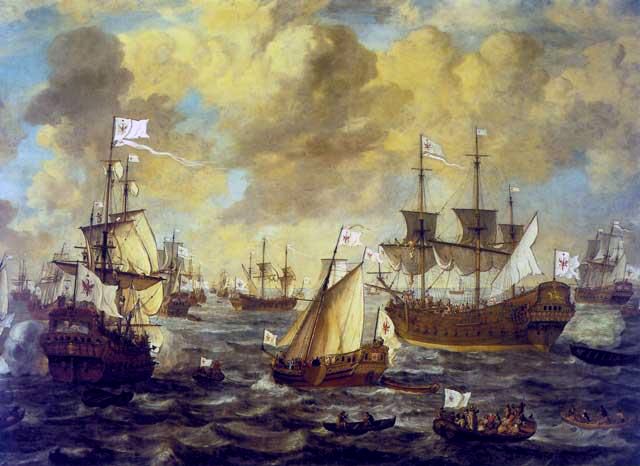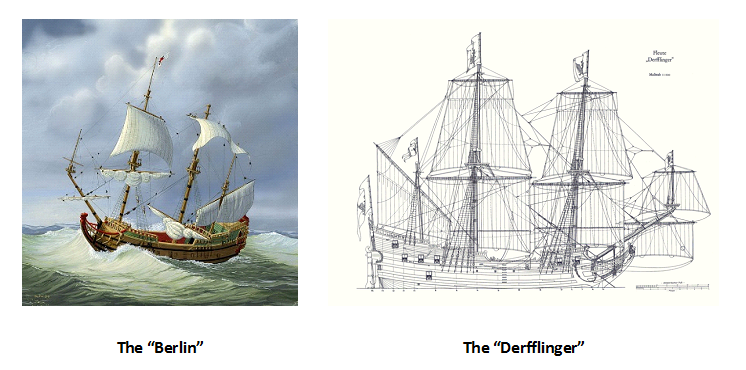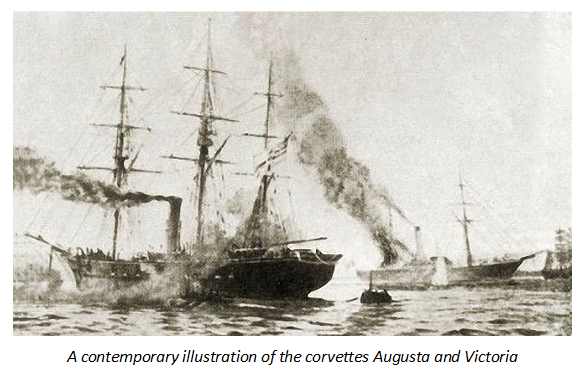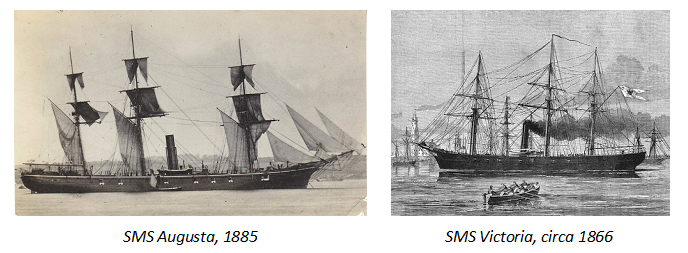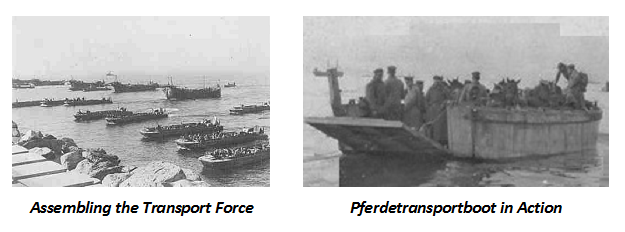American Goods, American Ships, Allied Victory
There are numerous factors that led, in the fullness of time, to the victory of the Allied Powers in the Great War. Of these none can be of greater importance that the freedom of the seas enjoyed by the merchant vessels of the Allied Powers; despite the best efforts of surface raiders and U-boats to strangle Allied sea lines of communication, Allied vessels, and the vessels of neutral powers in sailing in the service of the Allied powers, carried men and supplies from the far corners of the world to the battle fronts of France, Flanders and the Balkans. The main outline of this story is well known, but often forgotten is the contribution of the shipyards of the United States – shipyards that contributed dozens of merchantmen to the Allied shipping pool and helped make good the losses suffered in the U-boat offensive of 1916.
Prior to the Great War the American mercantile marine was focused mainly on coastal and inter-coastal traffic; save for the haulage of oil and other petroleum products, its ocean-going vessels were small compared to their European contemporaries, and its coastal passenger and cargo vessels were uncompetitive in world trade. Attempts to maintain an American-flag presence on the premier North Atlantic route had foundered on several occasions, and the surviving line was but a part of the American-owned but British registered International Mercantile Marine Company – a creation of the House of Morgan. Likewise the United States Steel Company had built up a substantial fleet of cargo vessels flying the British flag, ships which carried its products around the globe; other American firms had followed, building ships abroad, generally registering them under the British flag and manning them with British crews.
This changed in 1914 with the outbreak of hostilities in Europe. Prompted by the demands of American firms owning ships under foreign flags and the fear that such vessels would be requisitioned for Allied war service, the American Congress passed the Ship Registry Act of 1914, which relaxed the previous restrictions of placing foreign-built ships under the American flag. Overnight dozens of sturdy vessels became American, and quickly took advantage of the rising shipping rates to capture markets in the cross trades or, at war risk rates, hauled cargo from the United States to Britain and France.
The American shipbuilding industry, concentrated for the most part in on the eastern seaboard was, at this time, heavily dependent on naval shipbuilding – the civil demand being far smaller and more prone to boom-and-bust. The establishments were quite capable but their output was in large measure tied up with the United States Navy’s own shipbuilding programme, and prior to the outbreak of the European war there was little reason to invest in merchant shipbuilding. The New York Shipbuilding Company of Camden had been founded at the turn of the century to construct merchantmen along then novel principles – the use of standard forms and components – but had, perforce, turned to construction of battleships and destroyers for the American fleet, or such mundane fare as barges and coastal colliers. Several shipyards, such as the old Delaware River yard at Chester, sat idle for lack of work. This too changed with the coming of war.
Standard Ships for the American Flag
The expanded American merchant fleet found itself making good profits as a neutral carrier, which prompted American owners to invest in considerable new construction. New firms, such as the Munson Line, placed large orders for simple cargo ships, expecting to earn substantial freights or – as happened in several instances – sell the ships on the stocks to other operators at huge profit. By the spring the first of these new ships were sliding down the ways – the freighter William O’Brien, launched at Camden in April 1915. Over the next two and a half years American yards would add a further seventy-eight ships of nearly a half-million registered tons to the American flag fleet – many of them tankers of the largest size – for service on the world’s trade routes.
The more successful shipbuilders adopted a typically American approach to meeting the demand for shipping – creation of a standard design that could be built rapidly, either to order or on builder’s speculation – so-called “stock” freighters. The Bethlehem Steel Company was among the first to offer such a product from its Sparrow’s Point yard at Baltimore. Its “327” design was of 99.9 metres length, 14.3 metres in beam and of 6.7 metres draught, with a gross tonnage of 3,130; powered by simple triple-expansion steam engines the design was capable of making slightly more than eleven knots. The first of these – the Edith for Alexander H. Bull and Company – emerged in June of 1915, and was followed by nine sisters for several American shipowners.
Neutrals: Customers and Speculators
The revived American shipbuilding industry quickly attracted the attention of owners in Denmark and Nordmark, who found their need for tonnage far greater than their home industries could supply, and their traditional alternatives – the Clyde, the Mersey or the Weser – cut off. No fewer than fourteen vessels would be built in the United States for these flags, the first being launched in February 1916 by the newly formed Chester Shipbuilding Company, who had taken over the moribund Delaware River yard. The Scandinavians were the first to tap the shipbuilding resources of the Pacific coast of the United States – where the Todd Shipbuilding and Construction Company of Tacoma, Washington, built no less than five large stock freighters for various owners. The Lyderhorn, for Schoubye's Rederi A/S, was the first – a fast turbine-engined ship of nearly 5,590 tons gross and 8,800 tons deadweight; her twin screws propelled her and her sisters at a speed of thirteen knots. They were designed for the booming freight traffic across the Pacific Ocean between the United States and Japan.
The Allies Enter the Market
The demands of the armies of the Great War for war materials soon outstripped the capacity of the factories of France and Great Britain to supply them, and those same factories were soon dependent on raw materials and intermediate goods from the United States, to say nothing of the food required for the armies and civil populations of both nations. Within months it was seen that the tonnage in the Allied shipping pool was inadequate to the task, prompting varied responses by the Entente powers. While Britain, with its large reserve of mercantile tonnage, considered it unnecessary to take immediate action, and Atlantis, which chose to initiate an emergency programme of construction in its own yards, France turned to the United States for merchantmen.
France did so quickly for several reasons: the sharp increase in the need for imports from North and South America, as well as France’s own colonial empire, rapidly outstripped the tonnage under its own flag; the industrial plants of northeastern France, that might have delivered structural steel and plate, engines and other vital components had fallen to the German Army in 1914, and those plants and shipyards left were choked with naval construction, or diverted to the manufacture of material for the Army; and the menace of the U-boat bit quickly and sharply into France’s foreign trade, particularly in the Mediterranean. Thus it was in the early spring that a French commission surveyed the scene of America’s shipyards to determine how best to close the gap between France’s need and its capabilities. It found most of the shipyards on America’s eastern seaboard booked to full capacity, either constructing warships for the American navy, or merchantmen for American owners.
The commission then turned to overlooked shipbuilding resources offered by yards located on America’s Great Lakes. These yards were quite capable of turning out vessels rapidly, and had yard capacity to spare. The size of ocean-going vessels constructed there was constrained by the narrowness of the canals between the Lakes and the St. Lawrence River, and the length of the locks therein, but such commercial considerations counted for less than the rapidity with which hulls might be delivered. Agreements were quickly reached between the French commission and several builders, and designs agree upon; to conform to American regulations regarding neutrality, the contracts were let in the name of Companies France-Navigation SA, a consortium of French railway and shipping firms.
France would eventually receive forty-three small freighters from this source. Among the firms engaged in the programme were: the American Shipbuilding Company, who built eleven units at its yard in Superior, Wisconsin and nine in its yard at Toledo, Ohio; the Detroit Dry Dock Company, which built twelve; the Globe Iron Works of Cleveland, Ohio and the Great Lakes Engineering Works of Ecorse, Michigan, which each built four units; and the Manitowoc Shipbuilding Company, which contributed five. Most of the vessels constructed were of a standard design drawn up by engineers at the American Shipbuilding Company – an engines-aft design of 2,430 tons gross and 4,170 tons deadweight, measuring 76.2 metres in length, with a beam of 13.2 metres and a draught of 7.4 metres; powered by a triple expansion steam engine with single screw they were designed for a speed of ten knots. The first of these, the Saint Marie, was launched at Ecorse in September 1915, and was rapidly followed by many sisters.
The French authorities continued to seek larger steel steamers from American sources, with some success. From the newly organized Standard Shipbuilding Company of Port Elizabeth, New Jersey it eventually procured a trio of stock freighters of 6,475 tons gross and 10,620 tons deadweight, and from the Sun Shipbuilding Company of Chester, Pennsylvania another three steamers each of 5,780 tons gross. Most of these larger vessels came into service in the latter portion of 1917, where their presence was instrumental in overcoming the final submarine offensive of the Kaiserliche Marine. Overall France obtained sixty four cargo vessels in the United States, totaling more than 215,000 tons gross.
The British Response
By 1916 the British Government realised that efforts must be made to increase the mercantile tonnage available under the British flag. To do so a new department, that of the Shipping Controller, was formed, with the task of central management of construction of merchantmen in Britain’s many shipyards, easing bottlenecks and reducing competition for scare materials by competing shipyards. While its efforts were crowned by bright success, it too turned to the United States for tonnage.
Trailing in the footsteps of the French, the British found it necessary to cultivate a consortium of shipyards on the Pacific Coast of the United States, yards that had been drawn into the shipbuilding trade by the lure of high profits. These included the Columbia River Shipbuilding Company and the Northwest Steel Company of Portland, Oregon; the Ames Shipbuilding Company and the James F. Duthie and Company of Seattle, Washington. Together these four yards constructed no fewer than thirty large steel freighters of 5,780 tons gross and 9,600 tons deadweight, measuring 129 metres in length, 17.1 metres in beam and 7.7 metres draught. The engines for all of them were constructed by the Joshua Hendy Ironworks of San Francisco. Ostensibly constructed for the Cunard Steamship Company, the first of these, the War Baron, was launched in September 1916. Eventually eight of these ships would be transferred to the French under an agreement negotiated early in 1917.
Britain also availed itself of the yards on the American Great Lakes, and on the eastern seaboard – indeed, it advanced sums of money to American builders to assure rapid delivery of the ships needed to move the food, raw materials and ordnance that sustained the British Army on the Western Front. One such yard was opened by the already-established Pusey and Jones firm at Gloucester City, New Jersey, opposite Philadelphia. It built seven vessels for Britain, including the only tankers ordered by the Allies. The fast freighter design ordered from this firm was perhaps one of the finest merchant designs of the period – vessels of 10,650 tons gross and 14,200 tons deadweight, measuring 151.1 metres in length, 20.7 metres in the beam and 8.8 metres draught, powered by geared turbines turning twin screws for a speed of 13 knots. The first of these, the War Serpent, was launched in December 1917. Twelve were ordered by Britain but only four delivered prior to the Armistice in 1917; delivery of the remainder was cancelled but the hulls were snapped up by American buyers and completed in the shipping boom that followed the end of hostilities.
In all, seventy three merchantmen, amounting to more than 340,000 tons gross, would be completed in American shipyards to order of British intermediaries. Of these, thirty-three, totaling more than 160,000 tons gross, were launched in the final six months of the conflict, at the height of the U-boat campaign. Without the tonnage available from the United States it is possible that the scales might have tipped against the Allies; it is certain that without command of the seas and sufficient tonnage to move the necessary cargos, that the Allies would not have obtained victory in the war’s final year.
Aftermath
The Allied victory in the autumn of 1917 did not immediately impact the American shipbuilding industry. Britain and France cancelled their orders for ships on the stocks and for vessels not yet laid down, but such was the demand for shipping in the postwar period that most of the vessels under construction would be completed, if only for new owners, most of them American. By 1919 shipyards in Britain had returned to their peacetime business and were quite capable of meeting the demands of the British shipping industry; by 1920 yards in Germany had begun their slow recovery. In the United States, the great merchant-building consortium on the Pacific Coast collapsed in 1920, with only the long-established Todd yard at Tacoma surviving. The yards of the Great Lakes returned to constructing large Lakers to move ore and grain cargos. The hot-house yards on the eastern seaboard – Standard Shipbuilding, Staten Island Shipbuilding, Chester Shipbuilding and others – closed their doors forever. The Sun Shipbuilding Company, owned by a petroleum company, survived the lean times by constructing tankers.
The American merchant marine fared somewhat better. Overall, the ships built in wartime significantly expanded its size and capabilities. The newly founded Isthmian Steamship Company – a creature of United States Steel Company – would operate a fleet of twenty-one freighters on services around the globe, carrying the firm’s steel products to market and returning home with raw materials. From the ashes of the International Mercantile Marine Company would arise United States Lines, which remains a premier operator of both passenger and cargo ships on the North Atlantic. The growth of huge tanker fleets under the American flag – those of Standard Oil in particular – is a major development of the postwar period.
 engine which powered the Heinkel He280 fighter aircraft had a time-between-overhaul of less than twenty hours. Until suitable alloys became available the Junkers Jumo 004 reaction-jet engine suffered from similar limitations – though now it is reported that the time-between-overhaul of that engine new exceeds one hundred fifty hours.
engine which powered the Heinkel He280 fighter aircraft had a time-between-overhaul of less than twenty hours. Until suitable alloys became available the Junkers Jumo 004 reaction-jet engine suffered from similar limitations – though now it is reported that the time-between-overhaul of that engine new exceeds one hundred fifty hours. 